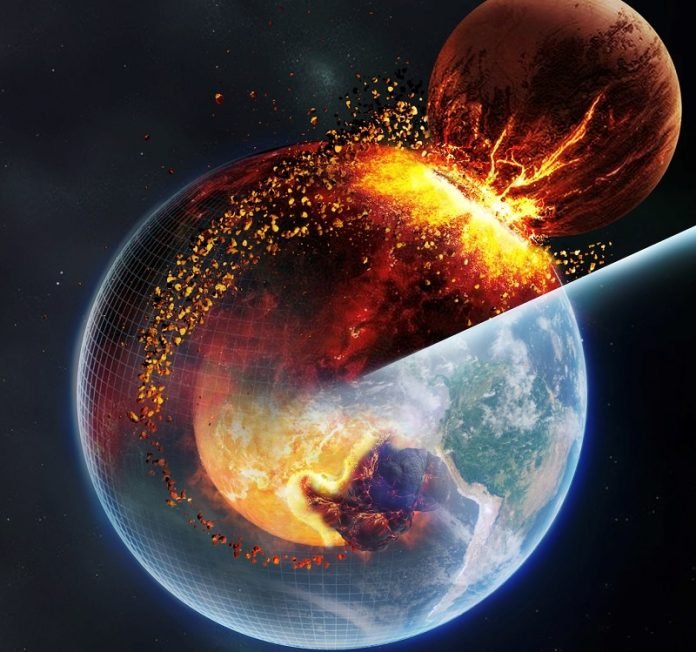
Scientists have stumbled upon a fascinating secret deep within our planet that might be linked to the Moon’s creation billions of years ago.
In a groundbreaking study, they’ve found parts of Earth’s insides that could be ancient pieces of history from the time when the Moon was born.
Long ago, around 4.5 billion years back, Earth wasn’t quite the planet we know today. It had a dramatic collision with a smaller planet-like rock named Theia.
This crash was so massive that it’s thought to have broken off chunks that eventually came together to form the Moon.
Understanding this event helps us figure out not just how the Moon came to be but also how Earth and the rest of our inner solar system evolved.
For years, scientists thought that after the big smash-up, Earth mixed so much with Theia that it would be hard to tell the two apart.
But the Moon and Earth seem almost like twins in what they’re made of, which puzzled experts because they expected them to be more like distant cousins. This suggested that our current ideas about the Moon’s origin might need some tweaking.
Enter Prof. DENG Hongping from China, who’s been working on solving this puzzle since 2017. Prof. DENG used new computer methods that are really good at simulating how liquids and gases mix, to mimic what might have happened during the Moon-forming collision.
His research was so significant that it made the front page of the prestigious journal, Nature.
What Prof. DENG found is pretty surprising. Right after Earth and Theia collided, Earth’s interior was like a layered cake, with a melted upper part and a solid lower part. The top layer was a mix of both Earth and Theia, while the bottom part kept its original Earthy recipe.
Fast forward to the present, and scientists think these layers haven’t changed much. They’ve found huge areas deep down under Earth’s surface, under Africa and the Pacific Ocean, where the ground doesn’t carry earthquake waves the way the rest of Earth’s interior does.
These areas, named Large Low Velocity Provinces (LLVPs), might just be the denser, iron-rich parts of Theia that sank and have stayed hidden for ages.
So, what’s the big deal about these LLVPs and the mixed layers above them? Well, they’re clues to the very beginnings of Earth. Sometimes, this deep material can rise up through volcanoes in places like Hawaii and Iceland, bringing up evidence of Earth’s ancient past.
By studying rocks from these places, scientists can understand better what Earth was like just after it formed, which is also a key to learning about how the Moon came to be.
Dr. YUAN Qian from the California Institute of Technology and his team have worked with Prof. DENG to study how Theia’s leftovers got mixed into Earth. By combining rock studies from Earth’s surface with advanced computer simulations, they’re piecing together a new story of our planet’s early days and the formation of our neighbor, the Moon.
Prof. DENG believes this research doesn’t just help us know our own cosmic backyard better. It might also shed light on how far-off planets around other stars could form and whether they might be suitable for life.
This discovery is exciting because it shows that Earth’s inner layers are not just a bland mix but a record of its dramatic history. By unlocking these secrets, we might rewrite the story of not just our Moon and planet but of other worlds orbiting distant stars.
Follow us on Twitter for more articles about this topic.



